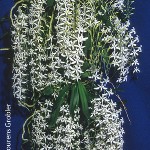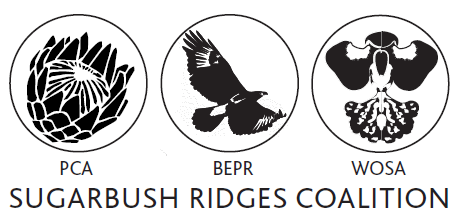Mystacidium capense
Description
Slender epiphyte with stems of 10-25 mm long. Leaves strap-shaped, unequally bilobed, up to 120 mm long and 22 mm wide. Inflorescences lateral, one to several, up to 180 mm long, laxly flowered. Up to 13 flowers are white with a glistening texture, 25-30 mm in diameter, sepals and petals similar, linear to spear-shaped, spur tapering, up to 60 mm long. Similar to Mystacidium venosum. Pollinated by hawkmoths. Colony forming. Fragrance sweet, jasmine-like at night.
Distribution in South Africa
Limpopo, Mpumalanga, KwaZulu Natal and the Eastern Cape. The plants and flowers in KwaZulu Natal and the Eastern Cape are larger than those in Mpumalanga and Limpopo.
Please submit your orchid photographs to OrchidMAP as citizen science records to improve this map.
Register on the Virtual Museum or login.
Typical habitat
Frequent in montane and lowland forests, where they prefer the smaller branches. Also found in drier localities, such as Acacia thornbush, from near sea level to 1300 m.
Flowering Period
This species typically flowers between September and January.
Distribution elsewhere in Africa
Endemic to South Africa.
Conservation Status
Click on the distribution map to see the latest conservation status also refer to Provincial Species List on this site for Provincial Red and Orange listing and SANBI Orchid red list.
All indigenous orchids are protected under South African legislation as well as CITES regulations.
References and additional information
Johnson, S.D., Bytebier, B. Stärker, H. (2010). Orchids of South Africa: A field guide. Struik Nature, Cape Town, South Africa.
La Croix, I.F. la Croix, E. (1997). African Orchids in the Wild and in Cultivation. Timber Press, Portland, Oregon, USA.
McMurtry D, Grobler L, Grobler J, Burns S. (2008). Umdaus Press. Field Guide to the Orchids of Northern South Africa and Swaziland.
This species article was written by Duncan Mc Farlane and published 2019-06-04.
Proof read and edited by Karsten Wodrich
Images


